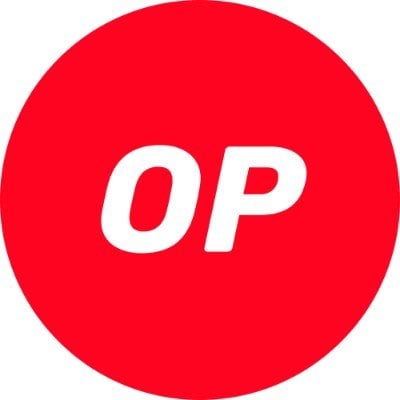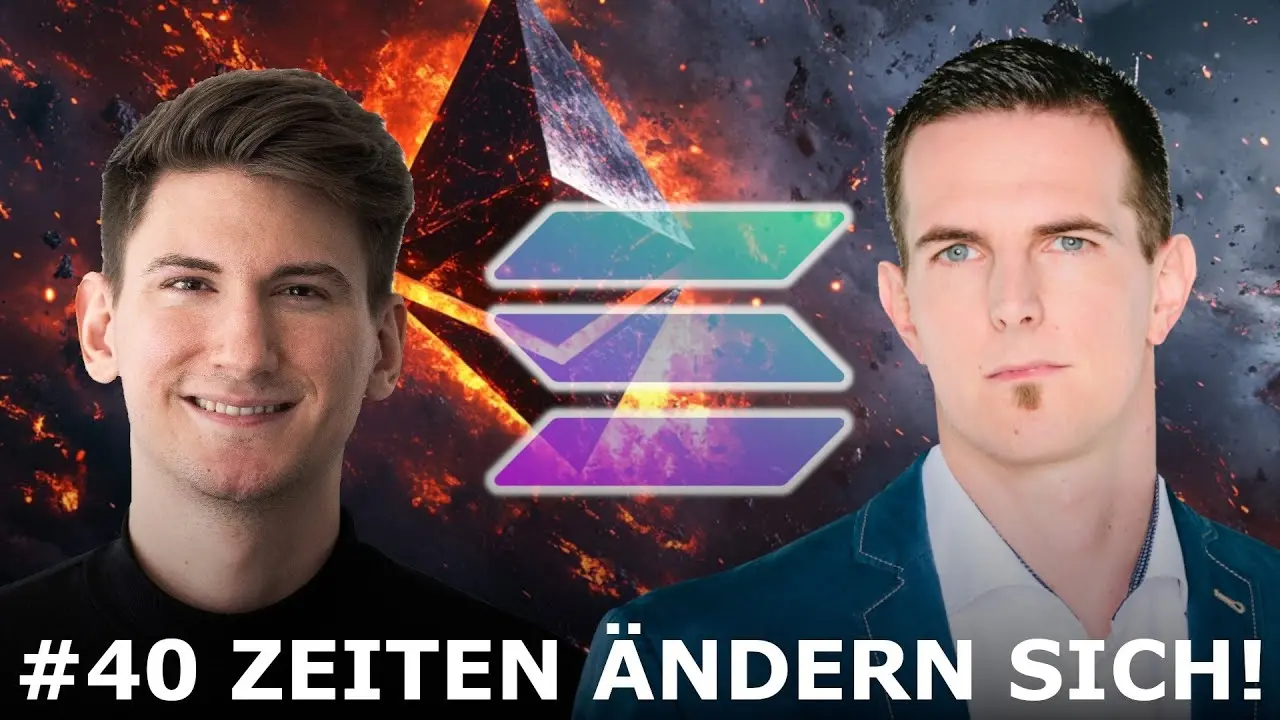Exploring Mantle's Path to L2 Breakthrough: Building Technological Innovation and Ecological Value
Written by: Snapfingers Labs
As an emerging L2 public chain, Mantle faces competition from established L2 networks. The "Four Kings" include Optimism and Arbitrum, which use fraud proofs, as well as Zksync and Starknet, which utilize ZK proofs. New players also have strong backgrounds, such as Base built by Coinbase on the OP Stack, Linea launched by Consensys as an EVM-compatible chain, and ZK-EVM introduced by Polygon. How can Mantle stand out among numerous L2 public chains?
Mantle is built on Optimistic rollup at its core, combined with EigerLayer's modular DA layer, introducing a TSS threshold signature scheme for network node management, thereby improving TPS and reducing costs. In addition to technological innovation, Mantle has ample financial support, with over $3 billion in treasury funds providing strong backing for the continuous development of the Mantle project. These funds will be used to attract developers to build applications and expand the user base, creating a virtuous cycle. How will Mantle leverage technological innovation to provide better performance while utilizing its financial advantages to build its ecosystem? This article will explore Mantle's historical background, technical features, operational status, and plans.
01 Background of Mantle's Birth
1.1 Development History of Mantle
Mantle was initially incubated and managed by the original Bit DAO as an L2 network project. In May of this year, Mantle officially became an independent brand, completing its brand merger with the original incubator. The Mantle treasury manages assets worth approximately $3.2 billion, primarily composed of BIT, MNT, ETH, USDC, and USDT. Initial supporters include cryptocurrency exchange Bybit, venture capitalists Peter Thiel, Dragonfly, Pantera Capital, and Polygon. From the historical background, it is evident that Mantle is backed by a large-scale DAO treasury, supporting the vision of DeFi and decentralized tokenized economies, with strong motivations and resources.

1.2 Major Platforms Entering the L2 Track
With the continuous rise of DEX, there is a clear trend of cryptocurrency trading volume migrating from CEX to DEX. Coinbase's Q2 financial report corroborates this, as its non-trading revenue has surpassed trading revenue for the first time, and trading revenue has begun to decline both year-on-year and quarter-on-quarter.

Platforms with a large user base have made moves in L2 this year: Binance's opBNB, Coinbase's Base, Bybit-supported Mantle, and Metamask's Linea. Base, as an L2 launched by Coinbase, reflects its further expansion of user lifetime value. Binance's L2 layout is more strategic; for an L2 network to remain active, it needs enough users to use and contribute liquidity. Binance, being the largest exchange platform globally, along with the relatively high user activity on BNBchain, can leverage its vast user base to either compel or incentivize them to use its Layer 2, thus helping the network grow rapidly.

L2 is rapidly evolving, and the Ethereum Cancun upgrade planned for November will significantly reduce L2 storage costs. Lower transaction fees and faster user experiences will undoubtedly give rise to richer application scenarios. On the other hand, compliance is also an important topic in the current crypto world. The SEC has repeatedly debated whether cryptocurrencies are securities, which may be why both the Base and Linea teams have stated they have no plans to issue tokens. In fact, even without issuing tokens, L2 can generate gas and MEV revenue through sequencers, and the two largest L2 solutions (Arbitrum and OP) both use a centralized operation model for their sequencers. Furthermore, with the support of modular infrastructure like OP Stack, L2 can be deployed rapidly under compliance conditions, making L2 almost a certain future.
The concept of Mantle's L2 was proposed in June 2022, and the Mantle network opened for internal testing in November. In March of this year, the Mantle testnet went live, and in July, its mainnet Alpha phase was launched, achieving the implementation of the Mantle DA data layer and a threshold signature scheme (TSS) with a node slashing mechanism. According to the roadmap, Mantle will launch the mainnet Beta version in September, providing more stable and reliable network services and supporting more DA apps and protocols. The development of the Mantle ecosystem is also progressing simultaneously, with 83 projects running on its network during the testnet phase. After the mainnet launch, the treasury allocated $200 million to establish the Mantle EcoFund to support the construction within the Mantle ecosystem, promote the adoption of Mantle Network among developers and DA apps, and incentivize strategic risk partners to support and invest in the Mantle ecosystem.
02 The Dilemmas of L2 and Mantle's Technical Architecture
The two major technical solutions for Rollup, OP fraud proofs and ZK zero-knowledge proofs, each have their advantages and challenges. OP's CallData storage costs are relatively high, while ZK's computational costs are also significant. Additionally, current mainstream solutions use centralized sequencers, which pose certain single-point failure risks. Mantle is a protocol based on Optimistic Rollup, and unlike other Rollups, Mantle's modular architecture can enhance performance in various aspects such as computation and execution. The transaction execution, data availability, and transaction confirmation of the Mantle network are all handled by independent modules, effectively improving data availability and optimizing the Mantle network's performance without compromising network security. Developers can also deploy contracts in a relatively low-cost and more efficient ecological environment.
2.1 Mantle Introduces a Modular Data Availability Layer, Significantly Reducing Transaction Fees
In the current blockchain architecture, Optimistic Rollup incurs high Calldata costs by submitting a large amount of transaction data to Ethereum's data availability layer. As transaction volume increases, this cost can account for 80-95% of total fees, severely limiting the cost efficiency of Rollup.
As an emerging L2 solution, Mantle successfully reduces operational costs by introducing a modular EigenLayer as an independent data availability layer. EigenLayer is a low-cost, efficient off-chain data availability network that allows Mantle to submit only the necessary state roots to the Ethereum mainnet, while a large amount of transaction data is stored in EigenLayer.

Position of Mantle DA in the Technical Architecture
As the first data availability module, EigenLayer's organic integration with Ethereum allows Mantle to ensure security while achieving ultra-low transaction fees. This breaks the current technical dilemma of "high security and low scalability" in L2 solutions. EigenLayer also outputs the security of Ethereum's staked assets to external protocols through a "re-staking ETH" mechanism, providing Mantle with security guarantees worth billions of dollars. This significantly lowers the threshold and cost for L2 networks like Mantle to initiate their own security models. Overall, EigenLayer's modular data availability layer can detach the high costs of storage and data submission from the Ethereum mainnet. With security ensured, Mantle's transaction fees are expected to decrease by several orders of magnitude, while throughput could increase by hundreds of times.
Moreover, EigenLayer supports dual staking. This allows $MNT to operate alongside $ETH as staking tokens. Through dual staking, $MNT can be used by validators as collateral to provide security and data availability for the network, while also being used as gas.
2.2 Mantle Enhances Fraud Proof Security through TSS Nodes, Shortening the Challenge Period
Fraud proofs optimistically assume that all Rollup transactions submitted by sequencers are valid, necessitating a long challenge period for security, with withdrawals from L2 to the mainnet taking 7 days. If the security of node validation can be improved, the challenge period can be effectively shortened.
Mantle's validation nodes adopt a threshold signature scheme (TSS) to minimize trust risks in execution results. TSS can generate public keys through distributed key generation, where each node holds a part of the private key to create valid signatures. Multiple TSS nodes validate and sign the block data sent by the sequencer, ensuring its correctness.

Operational Logic of Mantle TSS Nodes
Mantle TSS node operators need to stake a fixed amount of MNT on Ethereum. If malicious behavior or faults are detected, the stake will be slashed to ensure network security. The slashing module has clear provisions for two types of node misconduct:
- Node validation absence, malicious signing, etc., will be recorded by the TSS administrator. If the absence of node validation increases, the TSS administrator will submit a proposal to slash the node's stake portion with the agreement of the majority of other nodes (based on staking ratio).
- Malicious signing by nodes will be recorded by other nodes when TSS nodes submit fraudulent data to the network and reported to the TSS administrator. The TSS administrator will then submit a punishment proposal to slash the node's stake portion with the agreement of the majority of other nodes (based on staking ratio).
Note: The initial plan for Mantle's validation nodes was multi-party computation (MPC) technology, which has been transitioned to the TSS scheme during the Mainnet Alpha phase.
03 The Ecological Potential of Mantle
3.1 Ecological Incentives of Mantle
Mantle has strong ecological assets, including over $3.2 billion in funds and a large user base, laying a solid foundation for the development of the Mantle ecosystem.
To better incentivize ecological development, Mantle has launched a series of ecological incentive programs, primarily supporting ecological projects in two areas:
- First is financial support. Mantle has established a $200 million ecological fund with four main goals: attracting developers to the Mantle ecosystem, promoting venture capital, supporting the prosperous development of the ecosystem, and achieving investment returns. Ample ecological funds can attract a large number of quality projects to choose Mantle for deployment, enriching its L2 ecosystem.
- Secondly, through cooperation with the exchange Bybit, quality projects within the Mantle ecosystem have the opportunity to be recommended for listing on Bybit, thus gaining a broader user base and liquidity, providing strong momentum for the long-term development of the projects.
3.2 Mantle's LSD Planning May Significantly Increase User Scale and Asset Scale
The Mantle treasury holds over 270,000 ETH in reserves, providing strong financial strength in the LSD field. Based on this robust financial backing, Mantle will engage in strategic cooperation with several top LSD protocols to form a powerful ecological synergy, jointly promoting the research and application of LSD solutions based on the Mantle network, significantly increasing the user scale and asset scale of the Mantle network. This ecological synergy can not only generate synergistic network effects but also optimize capital utilization efficiency. This will significantly enhance the adoption rate and influence of the Mantle network.
First, Mantle plans to launch a liquidity ETH deposit protocol called Mantle LSD, which will be a liquid staking protocol based on the Ethereum mainnet. Users can deposit ETH into the protocol to receive equivalent mnt ETH tokens with yields. This token retains the price and liquidity of ETH while earning staking rewards. Mantle LSD can leverage the unique advantages of the Mantle ecosystem.
First, the Mantle treasury currently holds approximately 270,000 ETH, providing a significant initial deposit scale and liquidity advantage for Mantle LSD. It is expected that the total market value of mntETH after issuance could reach billions of dollars, potentially making it one of the top three protocols in the decentralized LSD field. This not only brings scale effects to Mantle LSD itself but also generates positive incentives for the use and circulation of mntETH on the second-level Mantle network.
Secondly, mnt ETH can be directly used within the Mantle network and can even serve as another version of ETH on that network. This will greatly enhance the use cases of mntETH and increase its stickiness within the Mantle ecosystem. Compared to other LSD projects, this is a unique advantage that can enhance user retention on the Mantle network. Furthermore, Mantle LSD can maximize the reuse of resources already established by Mantle, such as community, governance structure, and brand influence, significantly reducing operational costs and risks, thus optimizing capital utilization efficiency. At the same time, Mantle LSD will operate under the overall governance framework of Mantle, ensuring its long-term competitiveness and sustainability. Finally, from a technical perspective, Mantle LSD adopts a simple system architecture, reducing complexity risks and making it easy for other applications and ecosystems to access and integrate, laying the foundation for cross-chain interoperability and ecological expansion.
In addition to issuing mntETH, Mantle will also engage in strategic cooperation with top DeFi protocols, such as a partnership with Lido Finance to establish an stETH ecosystem on the Mantle Layer 2. Mantle is also considering collaborations with protocols like Pendle and StakeWise. Additionally, Mantle is exploring direct staking and other yield solutions and proposing the establishment of an economic committee as a sub-DAO to enhance asset management efficiency.
Through the issuance of mntETH, strategic cooperation with quality ecological resources, and leveraging its financial and governance advantages, Mantle has developed a systematic LSD strategic plan. This not only enriches its DeFi ecosystem but will also bring more unique user stickiness to the Mantle network. Compared to other L2 solutions, Mantle has significant advantages in this regard, which will strongly promote the rapid growth and cross-chain connectivity of the Mantle network.
Currently, Mantle has achieved a TVL of $40 million, and with the implementation of ecological incentives and LSD strategic cooperation, the ecological projects and TVL of Mantle are expected to grow rapidly.

Recently, Mantle also launched community incentives, where users can participate in activities through the mainnet or testnet to share a reward of 20M MNT in the first season. Some Citizen of Mantle NFT whitelist participants will also reward early Mint SBT users, with the first 5,000 participants eligible for a reward of 500k MNT.
For details, see: https://www.mantle.xyz/blog/announcements/mantle-journey-season-alpha-20-m-mnt-rewards-launched https://www.mantle.xyz/blog/announcements/500k-mnt-mantle-journey-explorer-event https://www.mantle.xyz/blog/announcements/mantle-journey-miles-guide
04 Mantle's Token Economics
4.1 Token Overview
The $MNT token serves a dual purpose in the Mantle ecosystem: it is both a governance token and a utility token. Holders of $MNT can participate in ecological governance by holding the token and can also use the token for various interactions within the ecosystem. Following the passage of proposals BIP-21 (brand unified as Mantle) and MIP-22 (Mantle token design), $MNT has become the new governance token. The subsequent passage of MIP-23 further clarified that the total circulation of Mantle tokens would be 7 billion. According to the initial distribution snapshot provided by the official on July 7, 2023, the distribution of $MNT is as follows:

From the distribution chart, it can be seen that the Mantle treasury holds nearly half of the $MNT tokens. The official project documentation also elaborates on this: the $MNT held in the Mantle treasury can be viewed as "non-circulating." The allocation of $MNT tokens in the Mantle treasury must adhere to the Mantle governance process, with budgeting, fundraising, and allocation processes following strict procedures.
After the initial distribution, the sources of $MNT in the Mantle treasury include:
- Irregular donations from Bybit
- Gas fee income from Mantle's mainnet
At the same time, according to the official documentation, the $MNT in the Mantle treasury is expected to have the following main uses:
- User Incentives
Implementing various strategies such as multi-season achievements, tasks, and other incentive programs to drive user adoption of Mantle products. The target metrics for user adoption include daily active users, total transactions and protocol fees, total locked value (TVL), and other related product adoption metrics. These incentives aim to attract and engage users within the Mantle ecosystem.
- Technical Partner Incentives
Focusing on incentivizing dApps, infrastructure service providers, and core protocol technical partners that contribute to the growth and development of the Mantle ecosystem. By providing incentives to these partners, Mantle aims to foster collaboration and partnerships, thereby enhancing the entire ecosystem and expanding its capabilities.
- Core Contributors and Advisors
Following the same budget proposal process to ensure transparency and accountability in the allocation of resources for teams and advisors that make positive contributions to the project's success.
- Others
When situations arise such as acquisitions, token swaps, inventory sales, and other transactions, these will be evaluated on a case-by-case basis, considering their potential benefits to the Mantle ecosystem and alignment with project goals.
4.2 Token Functions
Currently, $MNT is expected to serve two functions:
- Governance Token. As a governance token, each $MNT token is assigned equal voting weight, allowing users to participate in the project's governance decision-making process simply by holding the token, and influencing proposal decisions based on their token holdings. The community hopes to encourage token holders to actively participate in community governance in this way, ensuring decentralization and promoting a community-driven approach to shaping the future of the Mantle ecosystem.
- Utility Token. As a utility token, $MNT will serve as the gas token on the Mantle network, meaning that all gas fees generated from user interactions on the Mantle network will need to be paid in $MNT.
Additionally, the $MNT token can be used as collateral for Mantle network nodes, further incentivizing participation and contributing to the network's security and stability. In the long run, when the Mantle ecosystem focuses on the LSD track or even Restaking business, $MNT can also be used as collateral either alone or paired with LP.
4.3 Valuation Analysis
Since the Mantle mainnet is still in the Alpha phase and the infrastructure and application ecosystem are still developing, there is insufficient data for valuation analysis. The following is a qualitative valuation analysis based on token circulation.
- The mainstream quality assets in the Mantle DAO treasury can provide strong market-making support.
From the chart below (showing the funding holdings of the top ten wealthiest DAO organizations), it can be seen that although the treasury ranks third in terms of funds among all DAOs, Mantle has a clear advantage compared to the top two DAOs (Arbitrum DAO and Uniswap). The treasuries of Arbitrum and Optimism are almost 100% composed of their own governance tokens, while the Mantle treasury has 22.1% of its holdings in ETH, USDC, and USDT. This determines that the Mantle DAO will have stronger market-making capabilities than other DAOs and will have more quality assets to support ecological development. These factors provide a more solid foundation for the valuation of the MNT token.

- The operation of the Mantle network involves multiple token staking scenarios, which will effectively reduce the token circulation.
Unlike other L2 solutions that use ETH as the gas token, the MNT token is used as the gas token for the Mantle chain. As long as the ecosystem develops stably and on-chain interactions are active, MNT will be consumed steadily without the need for other artificial adjustments.
There are various scenarios in the operation of the Mantle network that can help reduce the circulation of MNT:
- Staking MNT tokens to become Mantle DA nodes
- Staking MNT tokens to become sequencer nodes
- Staking MNT tokens to become TSS node validators
Of course, the LSD platform that is already in planning will also use MNT as the main LP staking token.
- The Mantle DAO has long-term plans for the stability and appreciation mechanisms of the MNT token.
In April of this year, Bit DAO passed the BIP-20 proposal, modifying Bybit's donation method from a fluctuating amount of BIT donated based on exchange rates to a fixed monthly donation of BIT over 48 months, totaling 2.7 billion. The donated BIT will remain in the DAO treasury and will be burned through proposals when necessary. In May, the BIP-21 proposal was passed, completing the total donation amount mentioned in the BIP-20 proposal (2.7 billion) ahead of schedule. This proposal is undoubtedly favorable for holders, as it makes the circulation of BIT more predictable and further reduces the concentration of BIT holdings, decreasing the market's tendency to view BIT as Bybit's exchange token.
From the BIP-22 proposal, it can be seen that the Mantle DAO has been considering the stability and appreciation mechanisms for the MNT token, with some regulatory measures such as:
- Potentially controlling possible inflation by burning MNT tokens in the treasury.
- Following the ARB token model, controlling the annual new issuance of MNT tokens to not exceed 2% of the total supply.

05 Risk Warnings
1. Centralization Risk
From the distribution of token holdings, there is currently a high concentration, which is a common concern in the market. The proposals indicate that the Mantle DAO is actively addressing market concerns, and the donation plan in the BIP-20 proposal reflects the project's efforts to gradually reduce the centralized holding ratio. In terms of the number of holders, the number of addresses holding the MNT token has reached 70,000 (including L1 and L2). In terms of liquidity, MNT is listed on multiple DEXs like Uniswap, with liquidity exceeding tens of millions of dollars, providing ample liquidity options for MNT holders.
2. Community Governance Risk
Currently, the Mantle treasury holds approximately 49% of the total $MNT tokens, and the official documentation states: "These tokens can be viewed as non-circulating," and "These tokens will be used to support ecological development and the construction of ecological applications." The latest passed MIP-24 and MIP-25 proposals indicate that the DAO has established a dedicated economic committee and LSD strategy proposals, reflecting the DAO's efforts in optimizing community governance.
At the same time, according to information from the official sources, the Mantle treasury is managed by Mantle Governance, and at this stage, it serves as a DAO managing asset portions, with decision-making on usage established by DAO proposals. Currently, the Mantle treasury does not participate in Mantle governance voting.
3. Technical Security Risk
Mantle is an L2 protocol based on fraud proofs (Optimistic Verification), and the current Mainnet Alpha version of fraud proofs is still under development.
The data availability layer Mantle DA is a core technical component of the Mantle Network, and Mantle DA is rewritten from Fork Eigen DA. Currently, Mantle DA is the version before the integration with the Eigen DA mainnet, and after the Eigen DA mainnet goes live, the team will assess whether to migrate to Eigen DA based on actual conditions.
References https://snapshot.org/#/bitdao.eth https://www.bitdao.io/zh https://snapshot.org/#/bitdao.eth/proposal/0x6ebdd692948cb84ef2f1855718ffd4aa6421c092a656825870f70b2c27485040 https://treasurymonitor.bitdao.io/mantle-treasury https://www.bitdao.io/analytics https://treasurymonitor.bitdao.io/ https://www.gate.io/zh/learn/articles/what-is-mantle/454 BIT Network: An Iterative Modular Chain Approach, https://discourse.bitdao.io/t/archived-bit-network-an-iterative-modular-chain-approach/2988 https://www.panewslab.com/zh/articledetails/8903p3w6.html https://cryptowesearch.com/blog/all/mantle-network-mainnet-launch-modular-layer2-blockchain https://www.theblockbeats.info/news/43897 https://www.theblockbeats.info/news/42349 https://www.mantle.xyz/blog/announcements/mantle-a-new-approach-to-scaling-ethereum https://www.theblockbeats.info/news/36518 https://twitter.com/0xMantle/status/1613236965562015745 https://web3caff.com/zh/archives/63434 https://w3hitchhiker.mirror.xyz/GDSJApI2AyhfQSQVkdcAzlEeMqGxTiiypu1rVJX1JZw https://twitter.com/Moomsxxx/status/1671904364393295873 https://followin.io/zh-Hans/feed/5645145 https://discourse.bitdao.io/t/discussion-mantle-ecofund/4692 https://twitter.com/Moomsxxx/status/1671569578743169039 https://forum.mantle.xyz/t/discussion-mantle-lsd/7085















